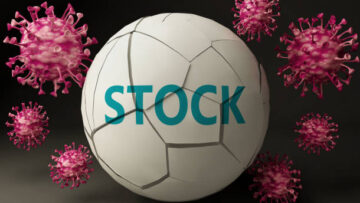The U.S. has a persistent poverty problem. In 1937, President Franklin D. Roosevelt said that our progress would be measured by whether or not we added more to those with much.
What about today? More than 13% live below the poverty line, and even a trillion in federal funding is spent on programs to reduce economic hardship and improve welfare – a quarter of the budget. “Poverty has a devastating effect on many families,” says Geoffrey Lawrence Cohen, a Stanford University Professor with a courtesy position at Stanford Graduate School of Business.
Cohen and a team of multidisciplinary professors have launched a new search for poverty solutions in response to the havoc. Machine learning will be used to sift through large data sets to understand better the variables that can lead to poverty or perpetuate it. Cohen says, “We are applying the tools from Silicon Valley to solve this historical problem.”
Not Poverty but Poverties
Researchers argue that poverty is not a single problem but rather a variety of issues disguised as if they were one. Each has its own etiology and individual experience. It also has its mechanisms. Policies to combat poverty must be tailored to each case.
Cohen and his team will combine existing and new data sources, such as U.S. demographics and social network information, Google Street View and census data, psychological data, and employment and earning statistics. Machine learning will combine these variables to identify the factors contributing to poverty, including poor health, and its effects, such as educational and social underachievement.
Recent advances in precision medical technology were a major inspiration for the project. Cohen says that although we have not yet cured cancer, we are making more progress than ever since we began to realize that cancer is a complex problem with many components. We can tailor our treatment to address the root cause.
Smart War on Poverty
Computer scientists will be part of the research team. They will use data analytics and machine learning to classify the information, creating a finely classified classification of different types of poverty – the various pathways into and out of it. What is the relationship between addiction and housing instability, for instance? Vital social programs are they able to counteract weak networks of social support? These data will be used to build predictive models that suggest the best interventions for a particular context.
The team will conduct randomized controlled studies to test the impact of small interventions. Cohen has developed a set of psychological interventions for heads of households. One type of intervention asks people to reflect on their core values, giving them dignity and sustenance. It has been proven that this reflection can buffer people from stress, and it has led to long-lasting improvements in education and health.
This type of intervention, though not usually associated with poverty solutions, is based on pioneering research in the Psychology Department of Stanford University. Cohen cited a study where poor immigrant kids were asked to affirm deeply held values. This led to better school results years later and a greater likelihood of being on the track for college.
Cohen and his co-workers don’t think an intervention like this would work for everyone. However, it is part of the vision of the project. He says they plan to use the project as proof of precision treatment. The hope is to show that there’s no one-size-fits-all solution to poverty. Instead, we can tailor our policies and interventions according to the unique vulnerabilities and opportunities of those we are trying to reach.
Start with the problem
This approach is a radical change in how social science has been conducted. Cohen says that most researchers start with a problem. For example, they examine a job-training program or a school health initiative. The study is completed, ideally in a randomized control trial, and the results are analyzed. “We are doing the opposite. We start with the problem and try to map its contours to target interventions precisely.”
Future research using these data could examine various poverty-related issues, including individual genomics. Could there be medical interventions targeted to help, given that stress exposure can activate genes that negatively affect health outcomes?
Cohen envisions that this data bank will be transformed into a diagnostic tool to help guide the nation’s efforts to combat poverty. He says that with enough precision intervention studies, the data bank could be transformed into a recommendation engine that tells what kind of policies are most likely to succeed in specific circumstances. “There are many people on the brink of a new destiny, and the right support at the right moment could make all the difference.”




